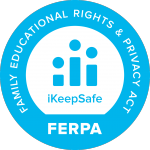Texas has the most counties of any state. It is second only to Alaska in landmass and to California in population. This means that the state Board of Education needs to serve a significant number of students from diverse backgrounds spread out over hundreds of thousands of miles. This is no easy task and one that educators and students have felt the brunt of in recent years.
Given these challenges, let’s look at the state of STEAM education in the Lone Star State.
A Brief History of Texas Education Since 2000
To understand the state of education in Texas in 2020, you need to know the challenges educators have faced over the past two decades. Michael Marder, Ph.D., executive director of the UTeach Science Program at The University of Texas at Austin, wrote about the rise and fall of Texas test scores in the past 20 years compared to states like California and Massachusetts.
From 2000 through 2011, test scores were on a significant upward trajectory, but then they peaked and have been falling ever since. Marder reports that in 2011, the state cut the education budget by $5 billion over the next two years, while also eliminating several programs for bilingual students, special education spending, and support for struggling learners. This, paired with a new set of exams that left teachers and administrators confused, has pulled Texas back to where it was before the 21st century in terms of education rankings.
The change in the testing style for Texas students is a sore spot for many teachers in the state. Former high school teacher Cynthia Ruiz says her students’ reading test scores plummeted in 2012 when the state switched from the Texas Assessment of Knowledge and Skills to the State of Texas Assessments of Academic Readiness (STAAR). Teachers received little preparation for the exam, and Ruiz then had to switch her teaching style from one of building a love of reading and learning to “drill and kill.” She saw students who were once avid readers give up in class because they thought there was no way they could pass.
“Not one college or employer looks at these scores, and we are spending millions of dollars on them,” she said. “And for what?”
In the past decade, few teachers have been able to recover their teaching style. This means that STEAM-based learning, which is often focused on projects and big-picture ideas, is perforce pushed to one side in favor of learning core material to maintain and improve test grades.
“To create a successful STEM community, it must include more than testing and the standardized, traditional modes of assessing knowledge,” writes Calvin Mackie, Ph.D., founder of STEM NOLA, a nonprofit K-12 STEM education provider in New Orleans. “There is a well-established culture of test prepping and test taking, however, I believe and some know that teachers and our students will benefit from bigger, broader, and more modern teaching methods like project-based learning or portfolio-based assessment.”
Many schools in the state of Texas want to embrace STEAM education and project-based learning, but few teachers have the time and resources to add additional lessons when their main focus is STAAR testing.
State Funding Cuts Creates Rampant Inequality
The $5 billion in education budget cuts that Marder mentioned has been felt across Texas. Schools that wanted to explore STEAM curriculums now can’t afford them. This leads the districts to provide funding, which creates an inequitable experience for students.
Tanya Reyna is one student who experienced this inequality firsthand. She grew up in one of the poorest regions of Texas and learned how much she had missed out on during her first few weeks of college. She even questioned whether her college acceptance was a mistake. Reyna, who went on to study at Columbia University, points to how districts are funded to show the rampant inequality across the state.
“School districts in Texas receive the majority of their funding through property taxes,” she writes. “Unsurprisingly, regions that suffer from poverty tend to have lower home values; whereas the opposite holds true for high-income regions.”
The result is that lower-income schools receive less funding, forcing students like Reyna to work twice as hard to reach the same place in their education as their more affluent peers.
When the state fails to provide for its students and local school districts can’t get funding from property taxes, community members have to fill the gaps. Sabina Bharwani, CEO of computer science enrichment program Hello World says her company’s partnership with the coupon site RetailMeNot allowed elementary and middle school students in Austin learn from professional engineers.
They visited corporate campuses and laboratories, and were exposed to ideas and concepts the schools otherwise couldn’t afford. Each Harmony Public School campus that Hello World worked with was a Title 1 school made up of predominantly underserved or low-income students. In addition, RetailMeNot “donated significant funds for computer science education” to over 500 students in these schools.
The city of Austin has seen tremendous growth over the past decade, bringing many new companies and creating a tech bubble within Texas. Many of these companies step in to support STEAM education within the city. However, programs that benefit Austin can’t help students in the rest of Texas.
“One of the challenges in West Texas is proximity to higher education,” says Kelty Garbee, Ph.D., director of programs at Educate Texas. “Another is having enough people to form a critical mass to get the attention of a funder or a higher education or workforce partner.” Rural school districts need to band together to apply for funding and form their own, community-based STEAM programs.
To be sure, many rural community members do lobby for funding for their local schools. For example, the Texas Farm Bureau reported that farmers could nominate their local public schools for grants up to $25,000 as part of the Grow Rural Education program. The local farmers nominate a school, and then administrators and teachers design a STEAM program and apply for the grant.
STEAM Education Means Providing Future-Ready Skills
The problem with separating STEAM education from core learning is that it reduces STEAM learning to building robots and developing apps when the reality is that this type of learning covers so much more.
Jason Treadway, Ph.D., director of the STEM Institute at Dallas County Community College District, emphasizes that the vast majority of jobs require “middle skills” or tools like problem-solving, critical thinking, and communication. At Ozobot, we call them “future-ready skills.” Treadway says it’s important for business owners, parents, and the general public to know that STEAM-learning isn’t just about environmental protection and bottle rockets, but honing the soft skills needed to make a programmed app or robot a success.
Other educators have offered similar thoughts when discussing the future of STEAM education in Texas.
“Whether a student goes on to become a novelist or neurosurgeon, those foundational skills will make the future they choose a brighter one,” writes Fatih Ay, CEO of Harmony Public Schools. “And it will make Texas’ future brighter as well, because we as Texans will be able to look at each new generation of young leaders and know that we were able to provide them an education that was second to none.”
The challenge is that skills like teamwork and leadership are harder to test for than multiplication tables. They are also harder to teach than other lessons that rely on rote memorization.
“What STEAM affords us is the opportunity for students to be very hands-on in their learning,” explains Lynn Ojeda, principal at Plano ISD Academy High School. “When we value creativity, innovation, and ideation, STEAM allows you to live in those places in your brain. STEAM allows you to think outside of the box. STEAM is a framework for how to move through a project.”
Texas schools need supplies for STEAM learning, but they also need the time and space away from standardized test prep to teach it.
Local Business Professionals are Lobbying for STEAM Education
The future of Texas STEAM education is a key topic of discussion not just for politicians and parents, but also for business leaders trying to plan for their future workforce.
“Texas is very rich when it comes to dominant industry clusters,” Alfreda Norman, senior vice president of the Federal Reserve Bank of Dallas told a group of business leaders on a panel hosted by the Communities Foundation of Texas (CFT) and the Toyota USA Foundation. “The job and talent pipeline needs to be geared so that workers are going into these clusters. STEM education is important to this job pipeline and growth.”
Educate Texas, an arm of the CFT, works to “bring together state agencies and school districts” through funding and grant programs. Its goal is to bridge the gap that leaves some districts impoverished when state funding is pulled.
Many organizations and professionals are stepping in to offer their STEAM insight. For example, the e-learning platform Nepris has a Texas-based site, Texas STEM Connections, where educators can request instruction from professionals statewide. Professionals sign up with the organization and specify where they are and what they do for a living. Then, educators request a virtual lesson from them.
There’s also the Texas STEM Coalition which provides resources for schools to earn STEM certification, hosts conferences for teachers, and works to offer resources for struggling schools. The nonprofit works with any K-12 school that wants to improve its STEM education.
Still, Texas students aren’t getting the STEAM education they need to enter today’s workforce — and even fewer are getting an education that they can take with them to college.
Alejandra Matos at the Houston Chronicle reported on the discrepancies between Texas school grades and student readiness. The state had set a goal in 2015: “By 2030, 60 percent of Texas high school graduates would earn an industry certificate or a post-secondary degree within six years.” This would be a substantial increase from the 29 percent of students who accomplished that in 2009.
Schools that are preparing students for college or to enter their professional careers are graded well by the state, but aren’t delivering prepared students. At several A and B-rated schools, the majority of students graduate with lower than expected SAT and ACT scores. STEAM education is meant to prepare students for the workforce, whether they enter it after high school or after college. However, the data proves that most students aren’t getting that.
This data is important for legislatures and the Board of Education to note, as the test scores grade students on national results (with the SAT and ACT), not the Texas-developed STAAR tests.
The state of Texas has a long way to go to provide STEAM education equitably to its students, but there is hope. As the demand for investment in STEAM learning grows louder from business leaders and administrators, the state government may follow in the footsteps of California, New York, and New Jersey to give teachers the resources they need.
Images by: kbhall17, rawpixel/©123RF.com, Cathy Yeulet/©123RF.com, 12019









